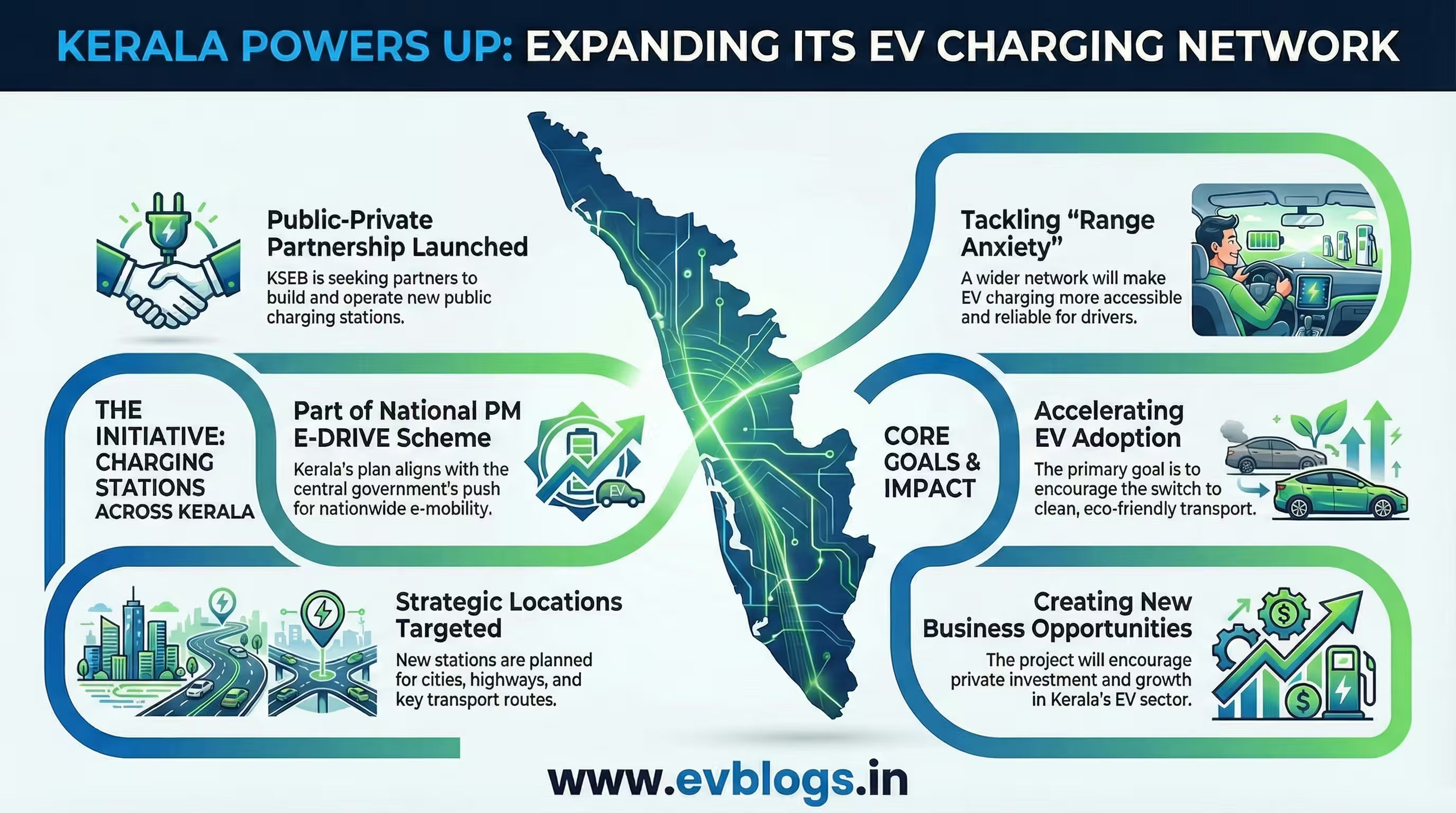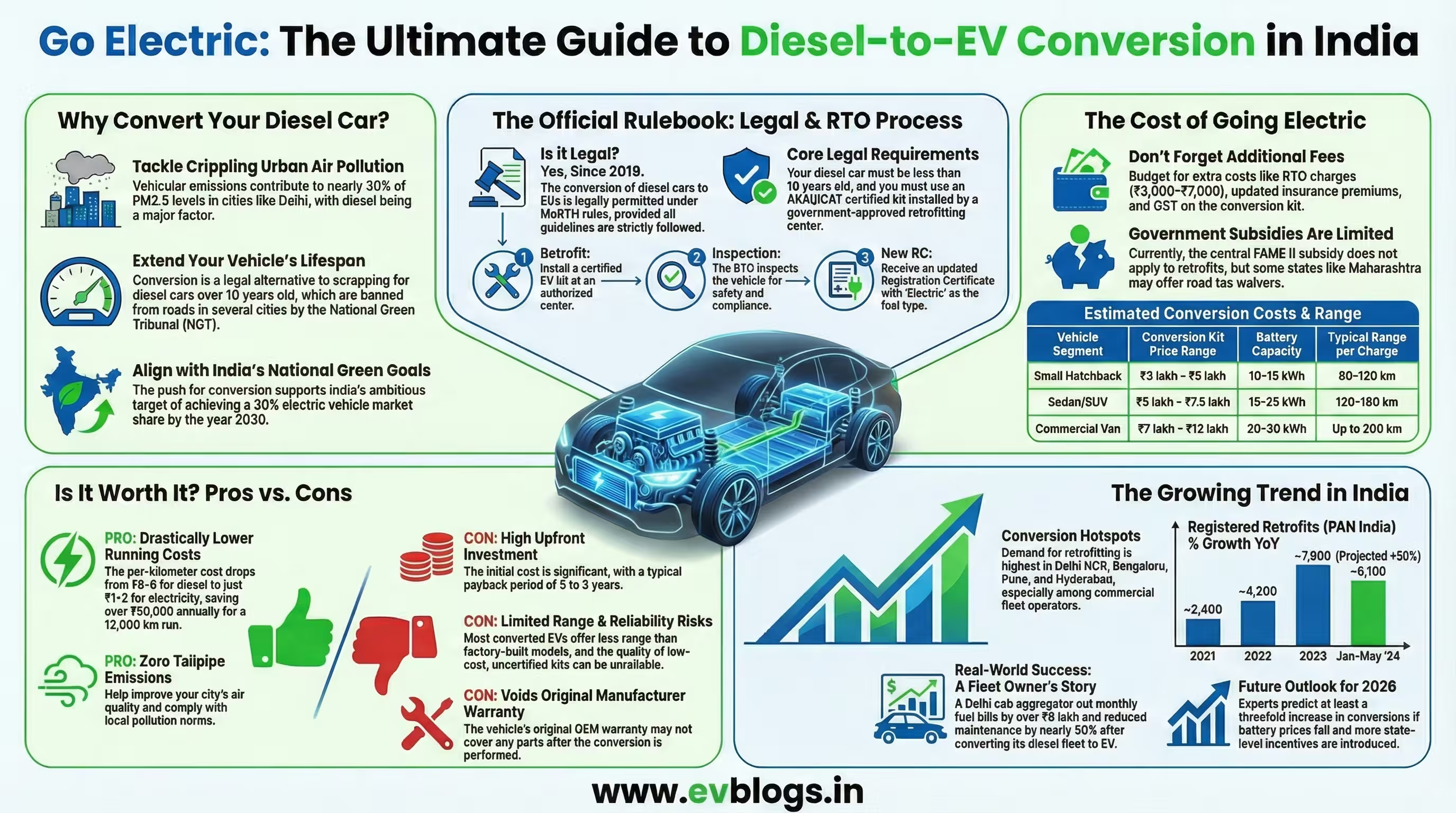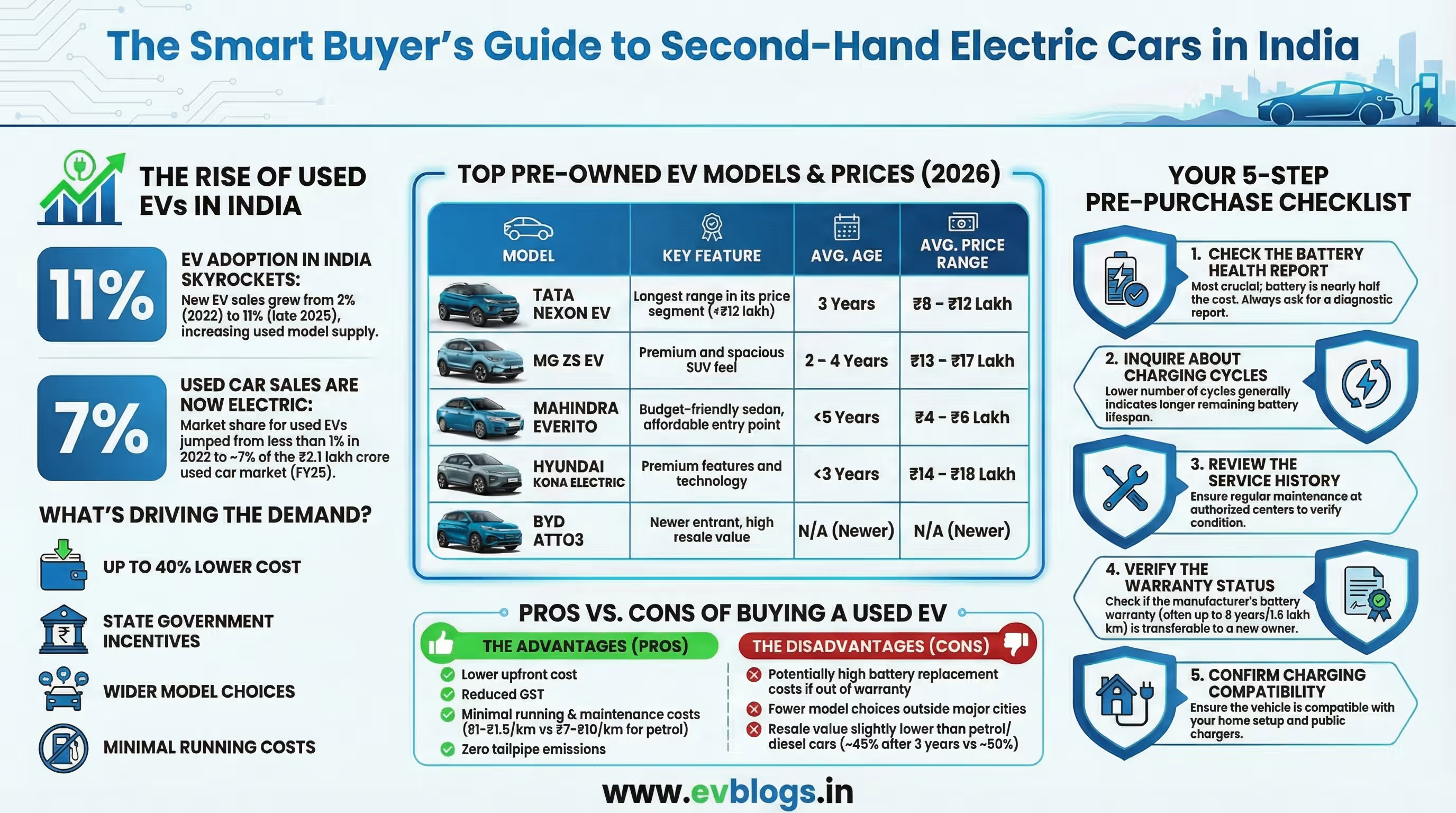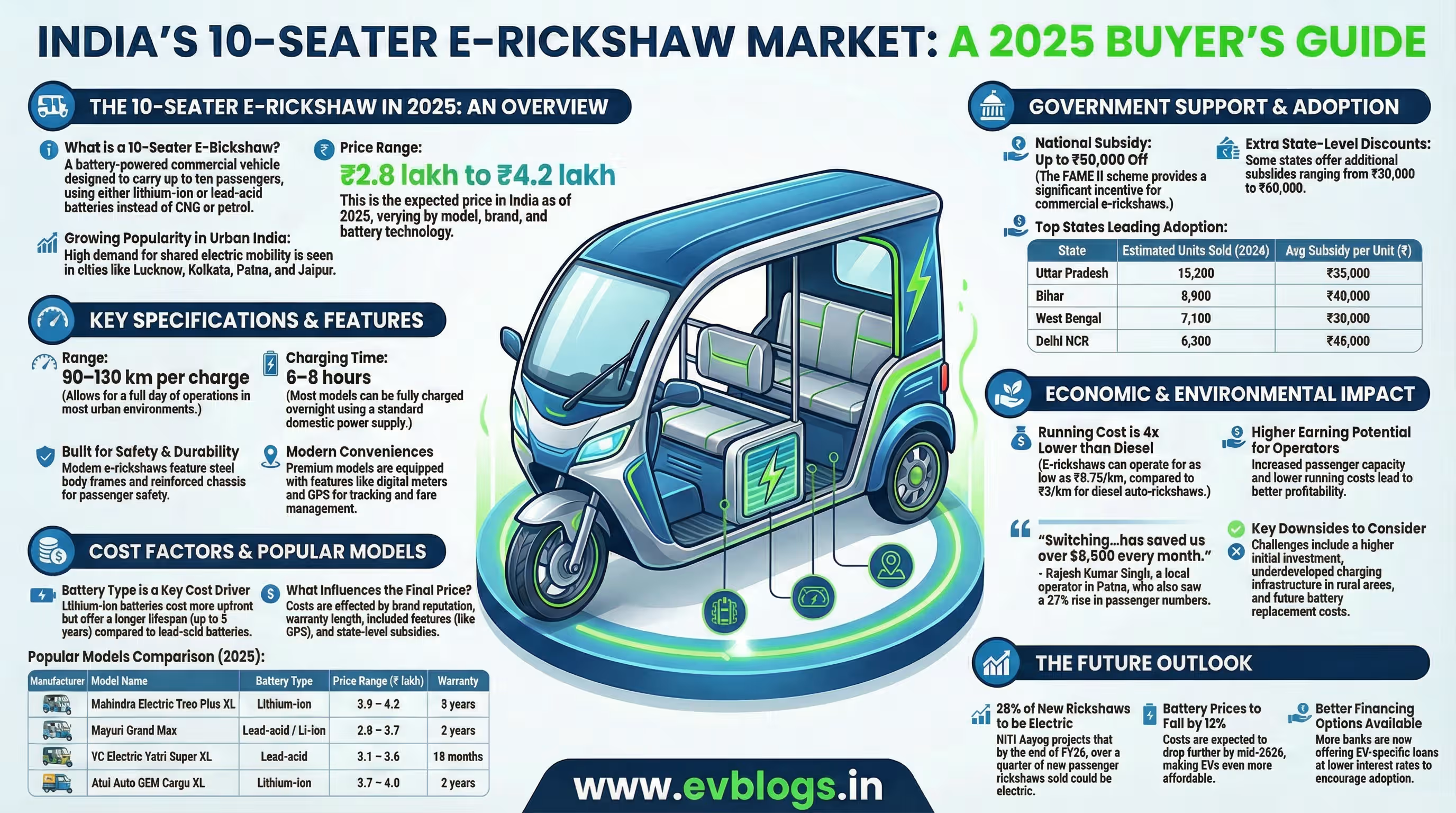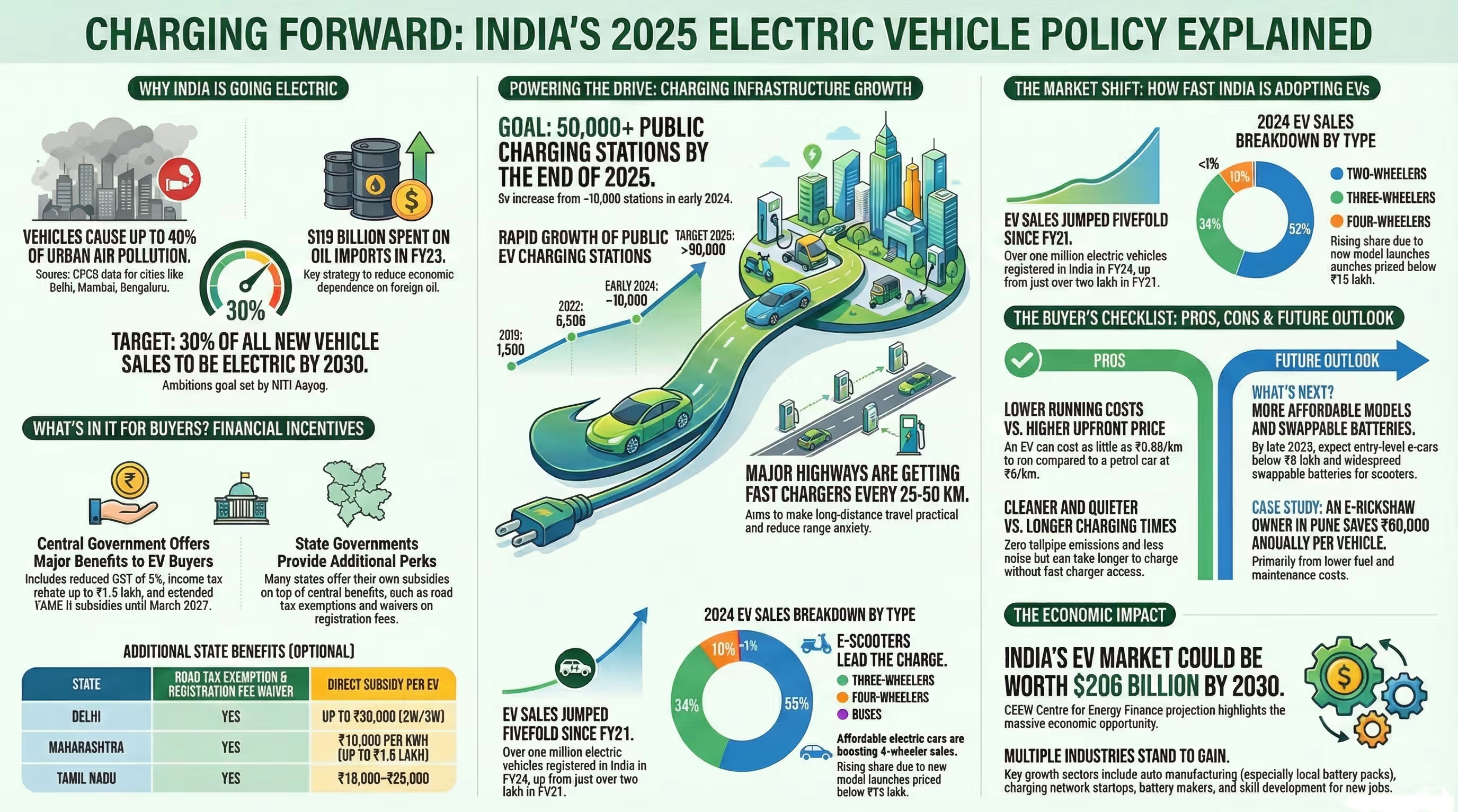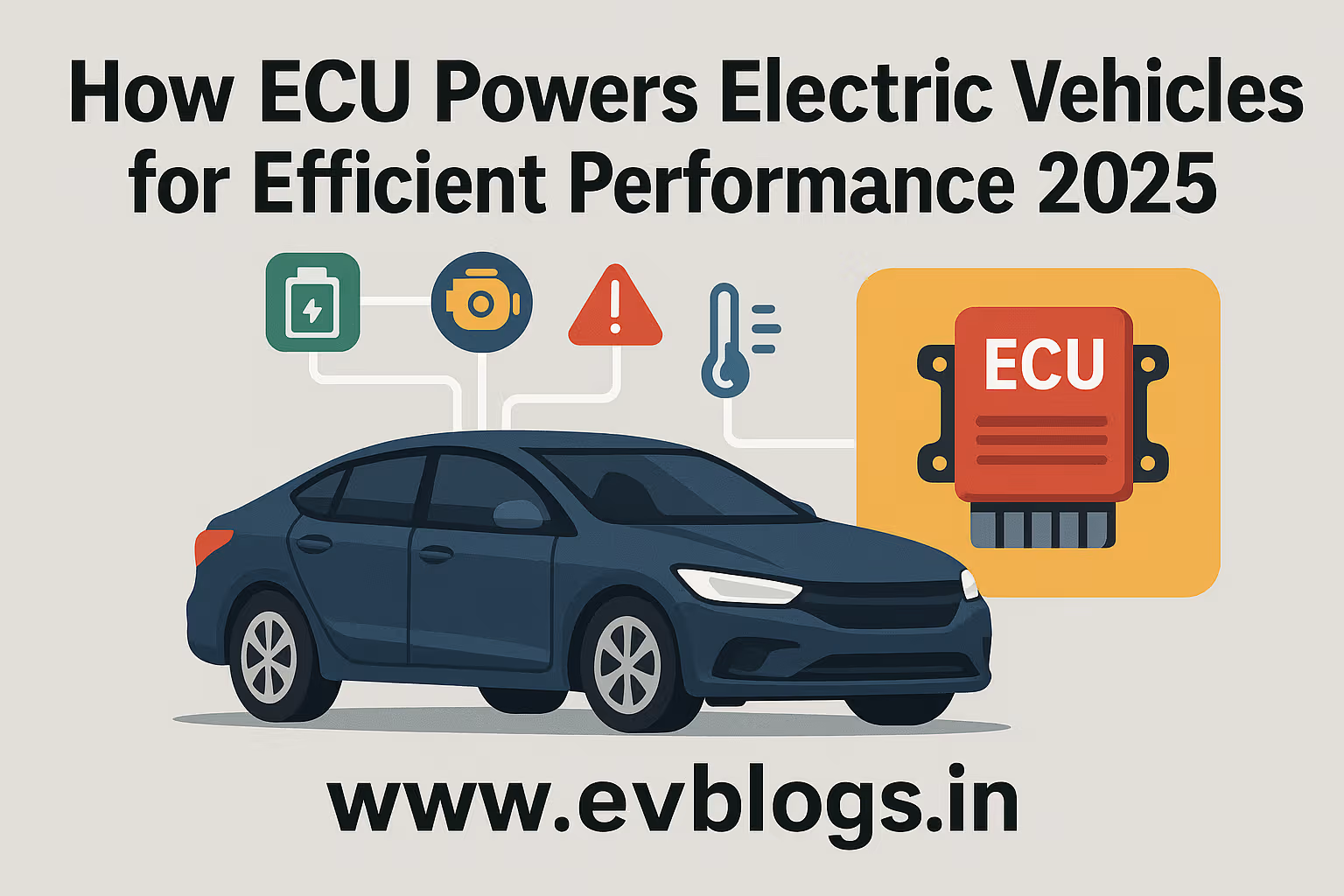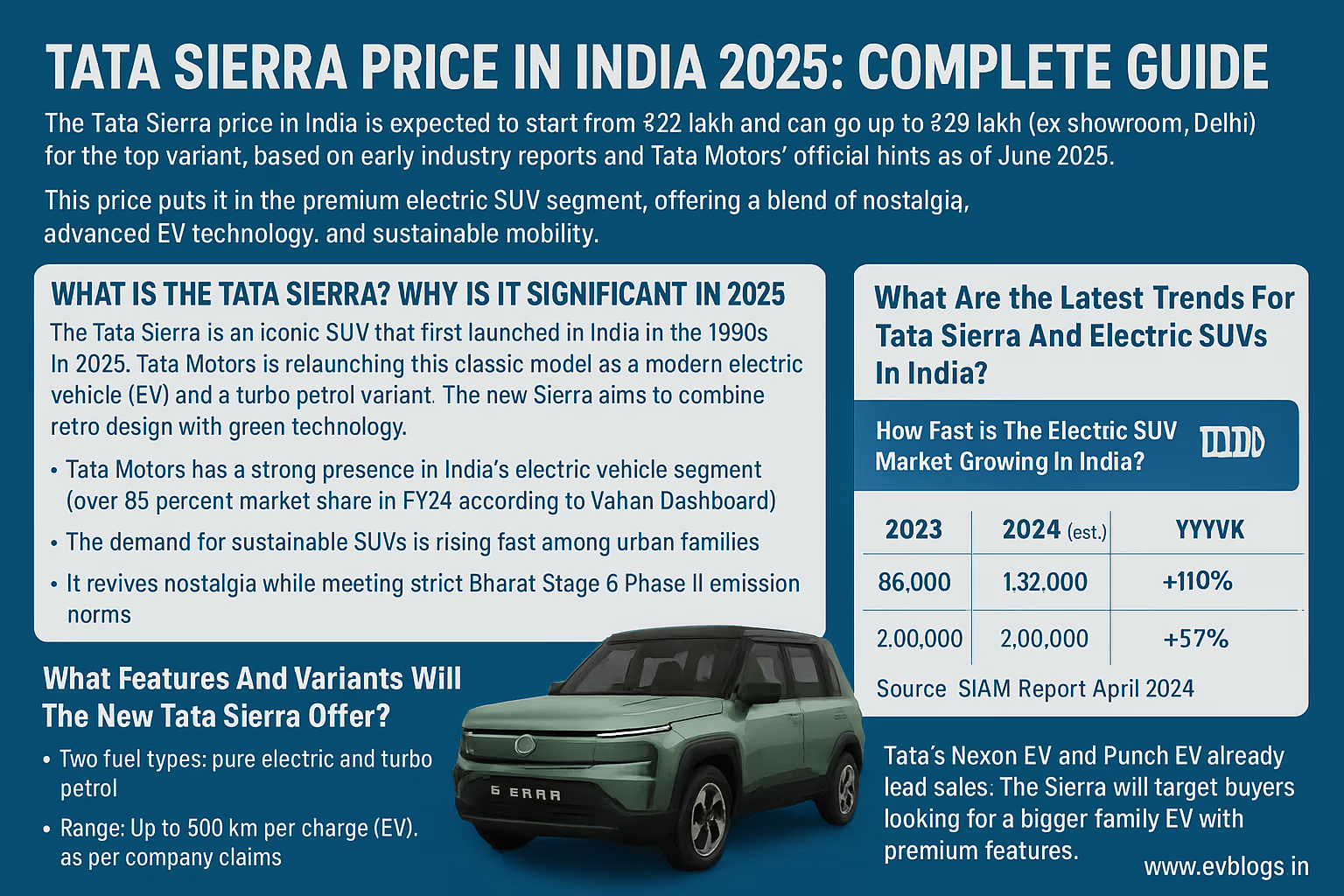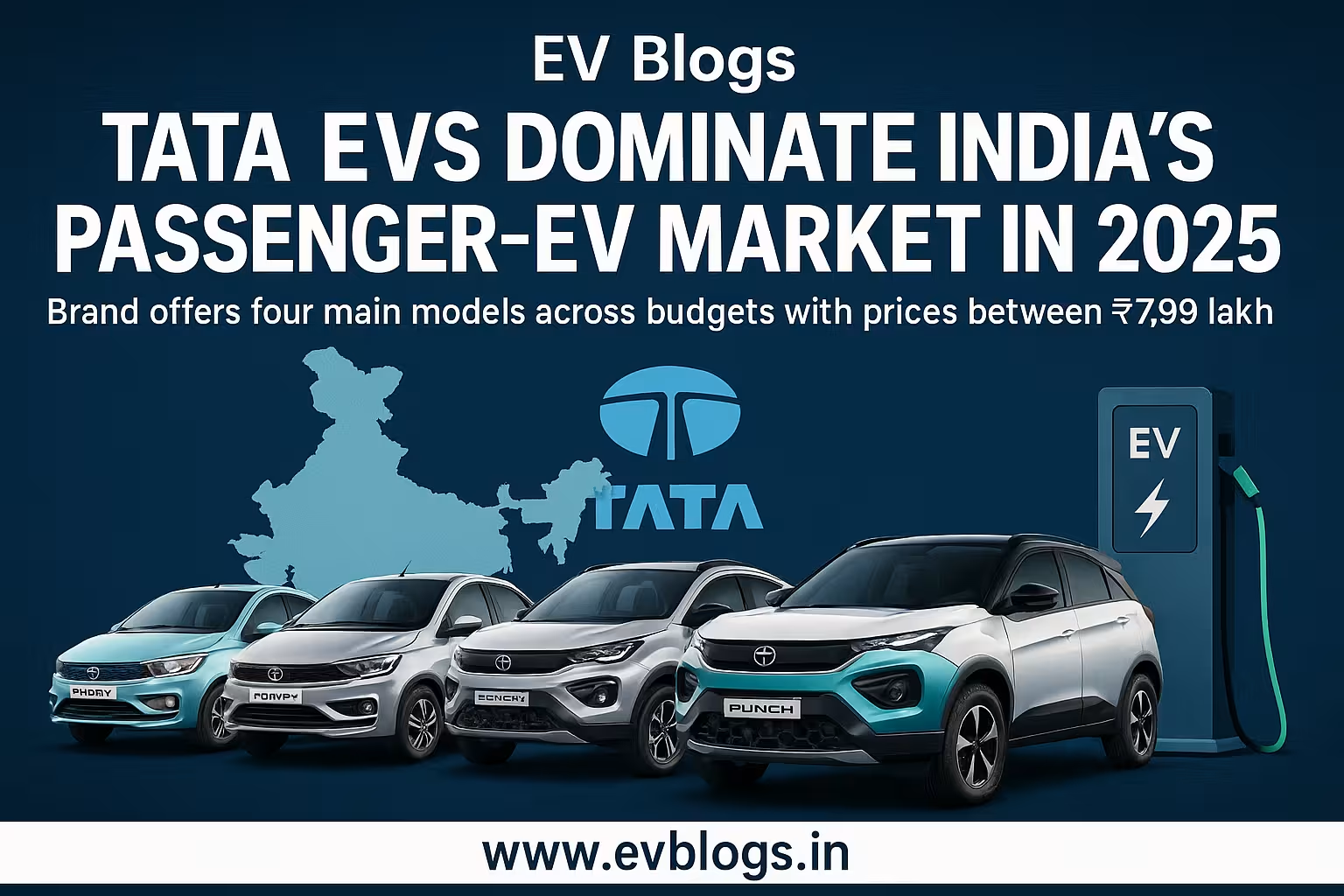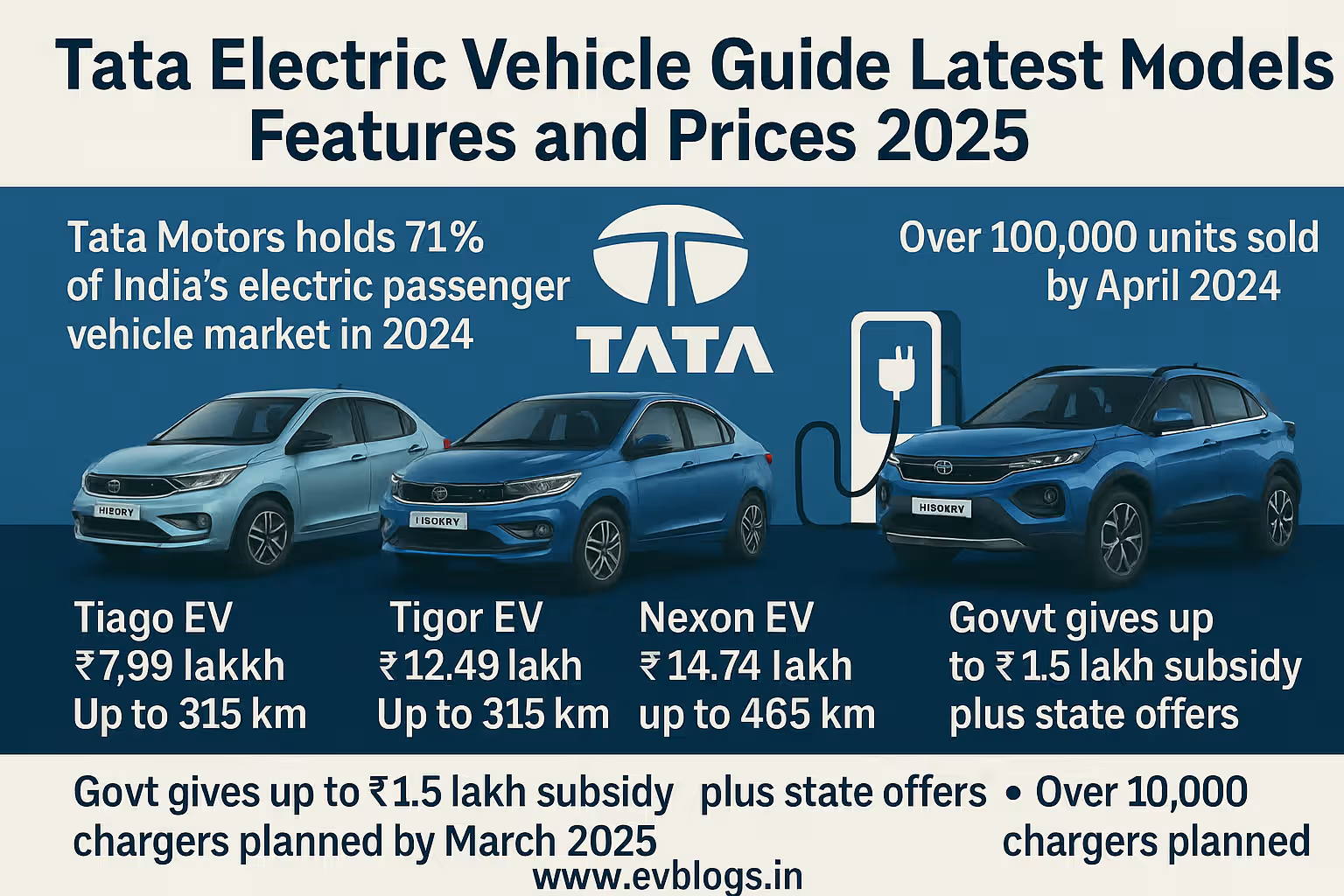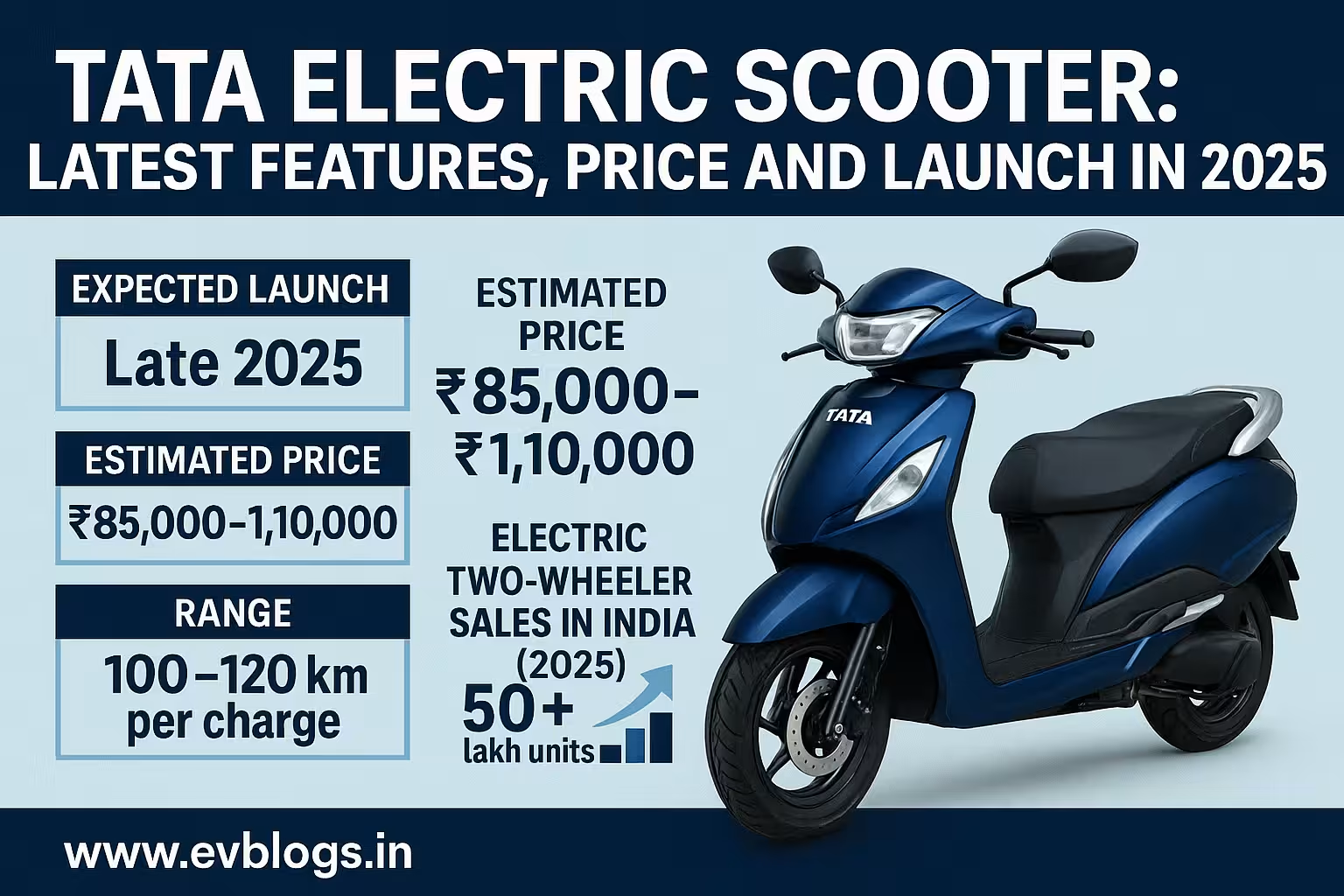Hedhvick Hirav
Hedhvick Hirav is a dedicated EV researcher and editor with over 4 years of experience in India’s growing electric vehicle ecosystem. Their contributions have been recognized in leading sustainability publications and automotive journals.
Summarize & analyze this article with
Choose an AI assistant and open this article directly:
Tip: if the AI doesn’t fetch the page automatically, paste the article URL manually.
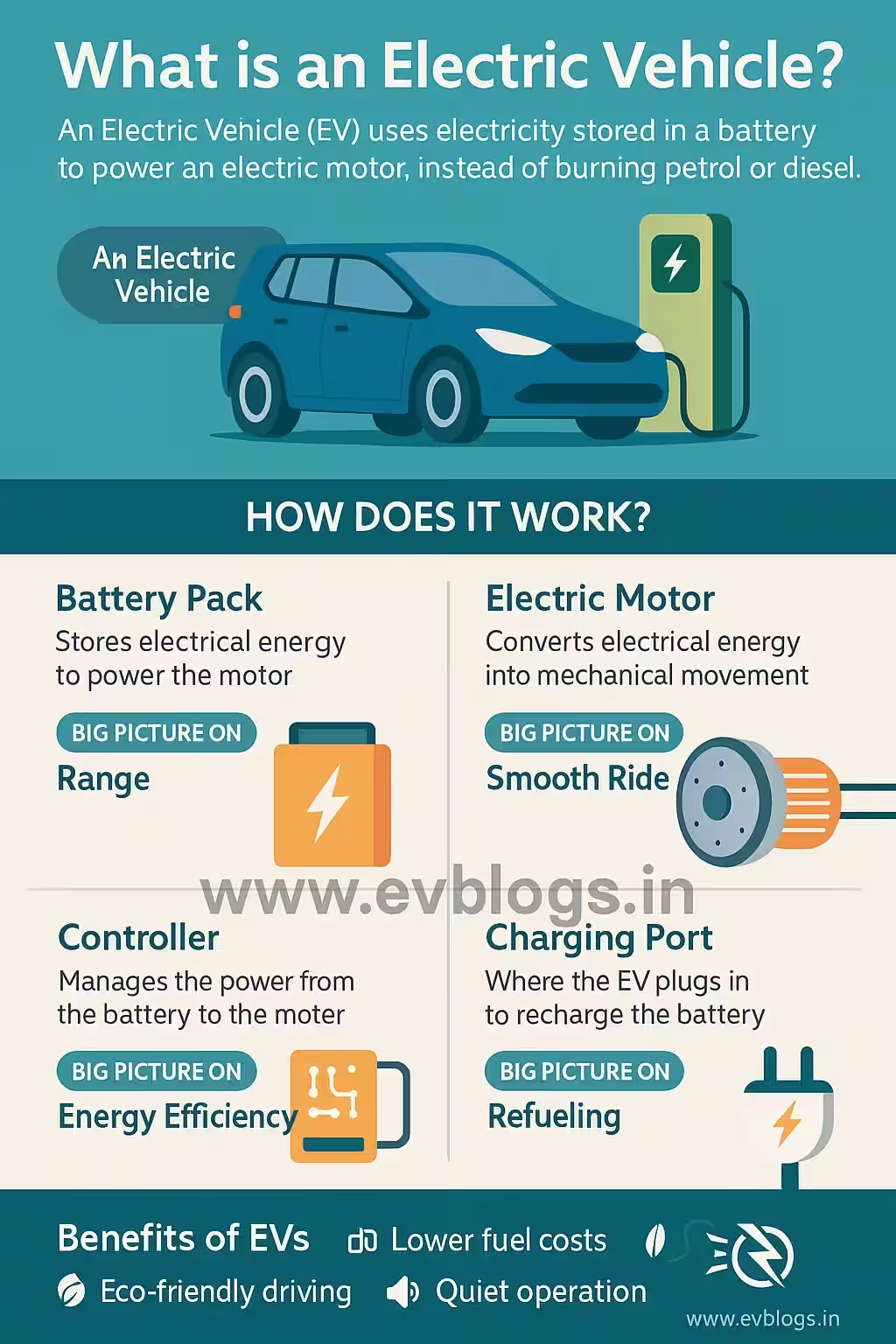
What is the electric vehicle?
The essence of an electric car is that it is just an ordinary car, but without the use of petrol or diesel, on the contrary, electric energy is stored in batteries. That is, there would be no exhaust emissions, there would be no need to refuel, and the ride would be a lot quieter. To charge the car, you only need to plug it in a source of power just as you do with your mobile phone.
Consider it to be an intelligent phone on wheels. Leave it plugged in overnight to load it up then, the following day, you are set to go.
How an Electric Vehicle Works?
NORMAL_Tests
There are a few major components of electric vehicles, and they all come together to bring you to where you need to be:
The theoretical maximum of shells of the Battery Pack (The Powerhouse) was about 100,000 volts with a range of about 800 to 1200 volts.
The most influential part in an EV is the battery pack. It charges electricity and runs the electric motor.
Function: This is the storing of electrical energy which propels the motor.
Why It Matters: The range of the vehicle in which the battery charge carries it is important.
Types of batteries Common types
- Lithium-ion: These batteries are lightweight energy-dense, and frequently used.
- Solid-State Batteries: The future of EVs- offer Charging much quicker and longer lifestyle.
unceasing Heart (The Heart)
The electric motor changes the energy in the battery to energy in motion, thereby steering the car.
Use: uses mechanical energy to make electricity.
Reasons to Care: Provides a smooth and responsive driving.
Motor Types:
- Brushless DC Motors (BLDC): These masculine, do not wear off. They are used widely in mainstream EVs.
- Induction Motors: Teslas and others use this.
Electric motors are referred to as instant torque, and it means that the car accelerates according to the depth of the push of the accelerator.
contain_a_lot_of language 3INHERE
The controller is what controls the EV. It controls what amount of power the motor is given to, dependent on how you are driving.
Application: It regulates the speed and the torque which is done by manipulation of energy flow.
Why it Matters+ Ensures that the energy is efficient and the performance is smooth.
Functions:
- Manages acceleration.
- It guards against energy wastes
In that Charging Port (The Lifeline) Pensive asinayarastnoy, A digression
This is where your EV will be connected to external source of power.
Recharge: Battery is recharged by connecting to a power supply.
Why It Matters; Decides how convenient the charging of your car is.
Methods of charging:
- AC Charging (Level 1 or 2): slower and is better used when at home.
- DC Fast Charging: Has the capacity to charge up to 80 percent in roughly 30 minutes making it ideal in public places like charging stations.
Personal electric vehicles that fuel and drive up India, India
These are some of the more viable EV options in India at a variety of price points:
Electric Cars in India – Range, Charging Time, and Price
| Electric Car Model | Per Charge Range | Home Charging Time | Price (INR) | Key Highlights |
|---|---|---|---|---|
| Tata Nexon EV | 312 km | 8–9 hours | ₹14 – 17 lakh | Accessible, reasonably priced, and convenient |
| MG ZS EV | 419 km | 6–8 hours | ₹20 – 24 lakh | Good range with advanced features |
| Hyundai Kona Electric | 452 km | 6 hours | ₹23 – 25 lakh | Long range, suitable for city and highway |
| Tata Tigor EV | 306 km | 8 hours | ₹12 – 13 lakh | Affordable, well-suited for city traffic |
| Mahindra eVerito | 181 km | 8–9 hours | ₹9 – 10 lakh | Budget-friendly, best for basic city commute |
| Audi e-tron | 484 km | 8.5 hours | ₹1.01 – 1.19 crore | Premium EV with long range and quick charging |
| Mercedes-Benz EQC | 455 km | 10 hours | ₹60.3 lakh | Luxury SUV with comfort and high-quality features |
Electric Light Car Models
- Tata Nexon EV
- MG ZS EV
- Hyundai Kona Electric
- Tata Tigor EV
- Mahindra eVerito
- Audi e-tron
- Mercedes-Benz EQC
Here is how to get an electric vehicle online in India {.wp-block-heading} SA
Purchasing an EV is convenient nowadays, and can be done wholly online. Here are the steps one by one described:
- Check the websites of Manufacturers: Look up the official websites of Tata Motors, MG Motors, Hyundai etc.
- Select Your Model: Compare spec, pricing and range.
- Test Drive: Free test drive.
- Search Financial Options: EMIs, bank offers, special finance and terms by partnering banks are available.
- Submit Documents: Upload address proof, Income documents and ID proof.
- Booking Amount Pay: Pay initial amount.
- Track Your Order: Track vehicle despatch and delivery.
- Handle RTO registration during delivery.
Who is an Appropriate Candidate of an Electric Vehicle? {wp-block-heading} Nordis
EVs might not suit everybody- but they make plenty of sense to some people:
- City Drivers: City Drivers are best suited to doing their daily commute around the town with low operational costs.
- Concerning environmental friendly individuals: Zero emissions.
- Tech-Savvy Buyers: Are fond of apps, connected technologies and innovative dashboards.
- Cost Sensitive Users: Reduces Maintenance and fuel-economical in the long run.
- Luxury Car Enthusiasts: Splendid EVs have exceptional comfort and the most advanced technology.
Benefits of driving an Electric car {wp-block-heading} mendosa church of mater deus
And here is what makes EVs so popular in India and the rest of the globe:
- Decreased Operational Costs: Electricity is much less expensive to use as compared to petrol/diesel.
- Low maintenance: less moving parts result in fewer problems.
- Government Incentives: This includes central and state subsidy and tax jurisdiction.
- Eco Friendly: Non polluting, cleaner air.
- Smooth Ride: Silent and gentle on maneuvers just like the conventional vehicles.
Challenges Of Electrical vehicle in India {.wp-block-heading} Italic
There are a number of limitations that are good to note before diving in:
- Dear Premium: EVs often seem expensive to scale in the beginning.
- Charging Infrastructure: There is also an expansion, but it is not wholly universal in rural regions.
- Fear of Battery Instability: Anxiety of losing energy of my device during the course of the long trips.
- Battery Aging: Just like everything in this world, when age creeps in; the battery capacity reduces with time.
Future of Electric Vehicles in India {.wp-block-heading}illes
Three years ago, I visited our alumni in India and, at least, surveyed 100 people in the north to understand the acceptance of high-priced trainings or any program. How did I do it? I simply asked them, did you find more value in this training? The response was I loved the training but I did not like to imagine how I would pay such a high amount of money.
The EV sector is on Toronto advancing at a fast pace This is what the future is like:
- Low prices of EVs: The prices will also decrease as they are produced in large scale.
- Battery Technology: Future approaches to battery (solid-state battery, sodium-ion battery).
- Fast Charging Networks: More fast chargers and closer to highways and metro.
- Solar + EV: Rooftop solar charging for an exceptionally green charging experience.
- Vehicle-to-Grid (V2G): Batch what you put in it home, or provide back-up to the grid.
Final Thoughts {wp-block-heading} supposedly landscapes and animals who support the human population by feeding on human garbage and, on another level, the inanimate world of stones and caves, the viewer is not only left hanging by some invisible chosen one but also powerlessness to do anything about it.
Electric vehicles are not quite the future but now. They are quick, efficient, clean and a pleasurable means of travel, particularly in India where the cost of fuel is escalating and its pollution is a serious issue.
Test drive or rent an EV over the weekend and find out. You may be surprised how enjoyable to experience the silent, smooth, and simple electric driving feels. And with a better infrastructure and state backing, there has never been a better time to be by going electric.
Statistics CD- ( Questionnaire PRWIME: What is the reason?
Related Links
- Turning now to- Question 9. What is the electric vehicle? A Beginner֒ gay guide
- What Is The Best Electric Car In India 2025
- EV Technologies in India: All you Need to Know Street to Car Buyers
- What is Electric Vehicle
- The Ultimate Guide To Electric vehicles in India 2025


